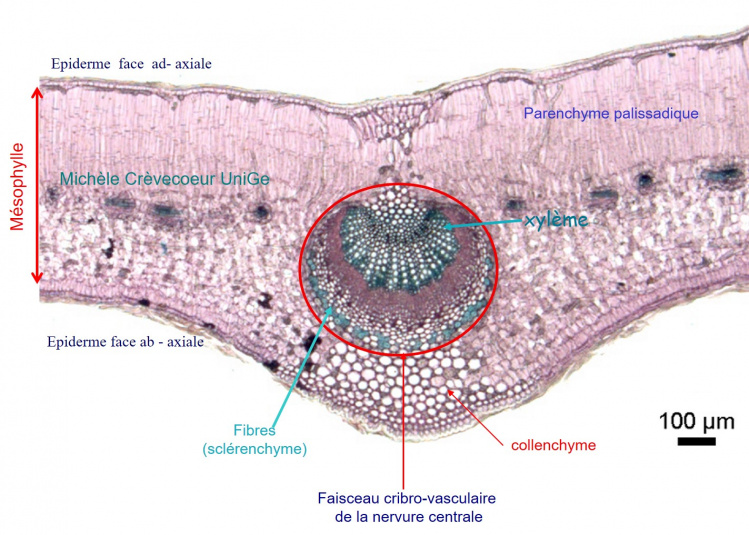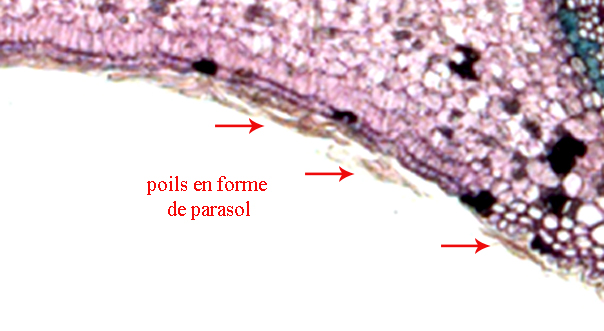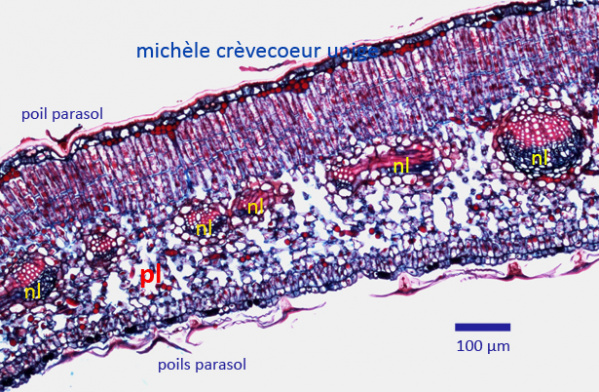Cross section in a leaf of Olea europea
Olea europaea, is a is an evergreen tree in the family Oleaceae, called common olive. It is found traditionally in the Mediterranean Basin where it represents one of the most important fruit trees. It is also found in northern Africa and western Asia. In Provence it grows on rocky and dry soils and is well adapted to dry climate. The leaves are simple, perennial and elongated in shape, with dark green, leathery surfaces caracterized by peltate trichomes. They protect stomata and leaf surface to limit water loss by evapotranspiration.
The section on this page are cross paraffin section stained with safranin alcian blue. Tissues with cellulosic walls are stained pink and tissues with lignified walls are stained green.
Micrograph of a section with the main vein (red circle) in the middle.

Detail of a part of section showing epidermis of the abaxial face with parasol – shape hair that often overlap (red arrows). These trichomes are observed on both faces but at higher density on the abaxial face to prevent water loss by evapotranspiration during dry or windy conditions.

Cross section in another leaf. The parasol- shape trichomes are well apparent and numerous on the abaxial (lower) epidermis.

nl : lateral veins ; pl: spongy parenchyma; pp : palisade parenchyma. Parasol shape hairs are well apparent on epidermis of the two leaf faces.
A few characteristics of the section: (1) vascular bundles of lateral and main veins are not aligned indicating that it is a dicotyledon; (2) heterogeneous mesophyll with two distinct parenchyma, palisade and spongy; (3) thick cuticle on both epidermis; (4) high density of peltate (parasol – shape) trichomes on epidermis of both faces. The characteristics 3 and 4 are those of a plant growing in dry environment.